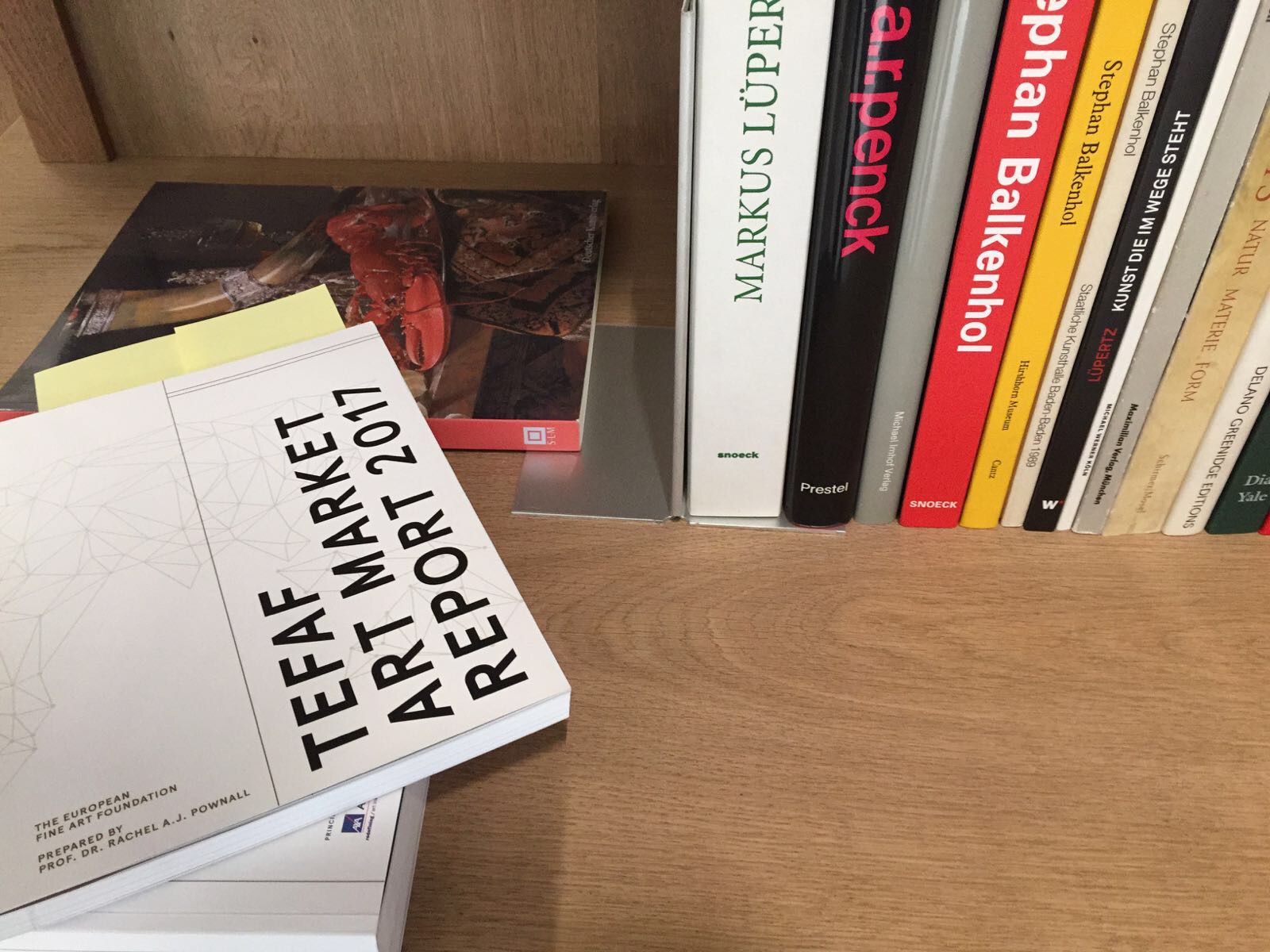
It’s all about Data!
30. March 2017Yes, this year’s TEFAF is once more “the museum of the world“ or as the German newspaper Handelsblatt put it, “TEFAF art fair, yet again, gathers the best of everything: baroque paintings and modern masters, jewellery, manuscripts, sculpture and design.“ The preview was as glamorous as ever, old and new money were united in their interest to “discover the new in the old“ (Handelsblatt).
Does this mean it’s business as usual in the art world? Not entirely. Behind the scenes there’s a lot going on. And that has less to do with any of the goods on offer than with information about them. Since 2000, the TEFAF Art Market Report is released parallel to the fair. It’s an annual survey of the economic background of all the categories named above not just in terms of TEFAF but of the global art market.
Dr Clare McAndrew and her company used to prepare the report on behalf of TEFAF. This demonstrates that the fair is not just concerned with the activity in the halls but also with the analysis of the motives, processes, value creation and other meta-aspects of the art market. Last November the news reached us that Art Basel had poached McAndrew and her team. Touché! At the same time Sotheby’s purchased the Mei Moses Art Indices, one of the softer indicators of value aspects within the art market. Obviously the race for the best data has begun.
March also saw the release of the Art Market Report, prepared by Professor Rachel Pownall, a renowned art-market expert. Did its launch suggest anything had changed? Well, it looks as if there’s even more interest in it this year, judging by the attendance: the auditorium was filled with a colourful mix of people working in the art world – not just scholarly nerds or market esoterics. Evidently the subject of data has been taken up by the wider masses and data knowledge is increasingly understood to be part of the basic package.
There were two important points that emerged from the data:
1. Global art market sales moved from auction houses towards art dealers. The art market in 2015: $44 billion, of these $23 billion with dealers and $21 billion with auction houses; the art market in 2016: $45 billion, of these about $28 billion with dealers (+20%) and $17 billion with auction houses (-19%). That sounds surprising, and it probably is – if the numbers are correct. The frequently invoked end of “stationary retail trade“ seems to have receded into the distance. The reason, according to the Art Market Report, is that auctions’ transparency turned into a disadvantage, while the discretion and competence of art dealers became highly valued. That sounds too plausible to be completely wrong. However, there remain questions of method. Auction sales are absolutely transparent, but the aggregated numbers of the global art dealership are much harder to obtain and assess. To answer this charge, Professor Pownall points out that as part of her academic research she has access to different national statistics. Hopefully she’s right.
2. The hierarchy of global top sellers shifts further in the direction of Asia. The leader of the top 20 artists by sales volume at auction remains Pablo Picasso, albeit with a dizzying drop of 50% compared to the year before. Andy Warhol fell by 68%; Francis Bacon dropped by 63%; Cy Twombly tumbled by 65% and even German hero Gerhard Richter dipped 8%. In 2016 the top five includes three Chinese artists (+46%, +21%, +71% respectively), the top 10 contains five. These kinds of figures clearly show that there’s been a major shift in the tectonics of the global art market.
To track and understand these changes one needs data that goes beyond the usual horizon of expertise. In short: for the foreseeable future the TEFAF Global Art Market Report is essential reading. Should there be several providers of premium information in the future, all the better, but whatever happens, TEFAF is and will remain the most wonderful art fair in the world.
The New York Times published an article on data analysis on 23 March 2017.
